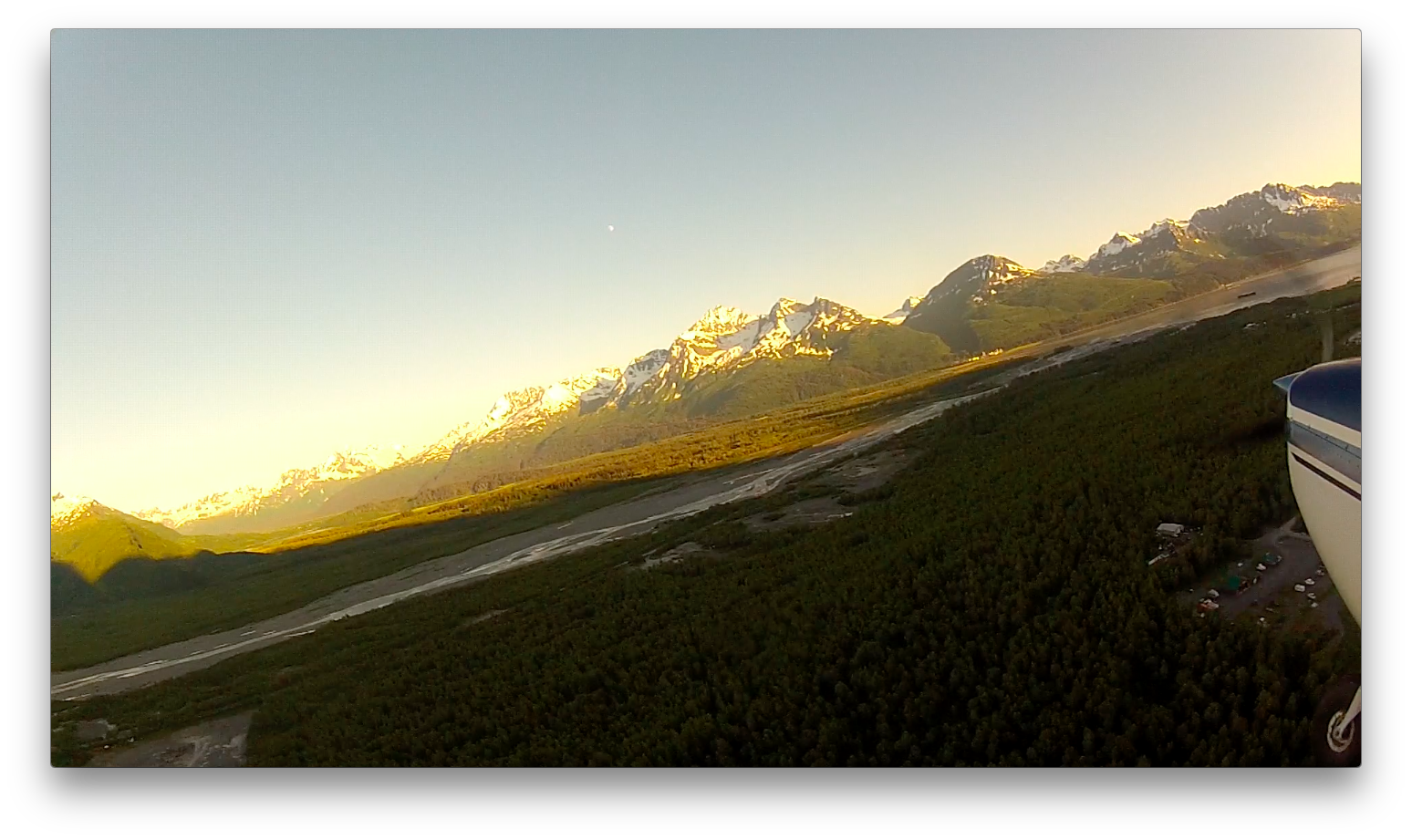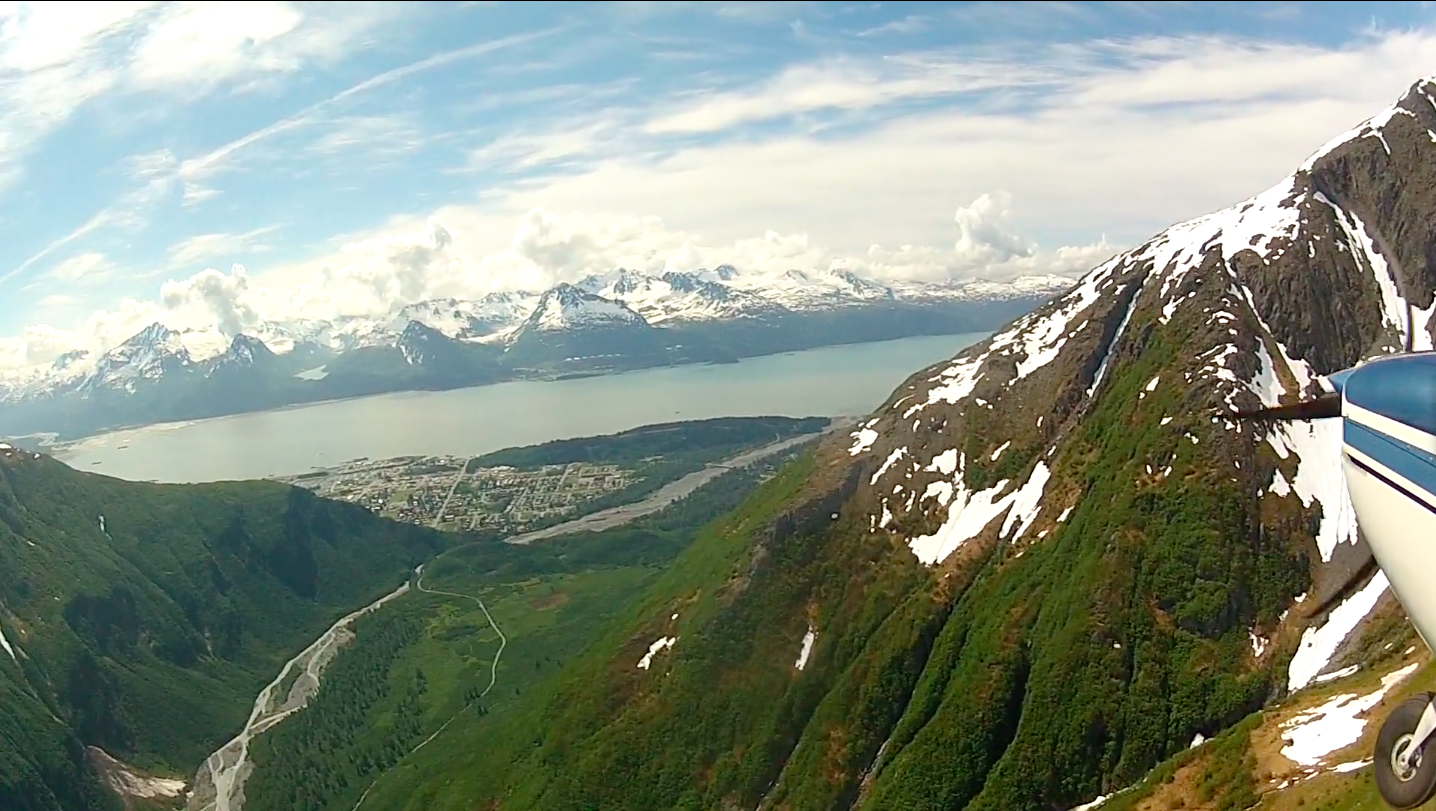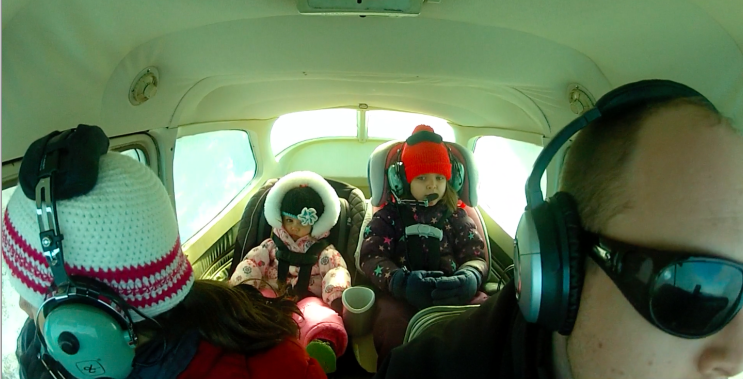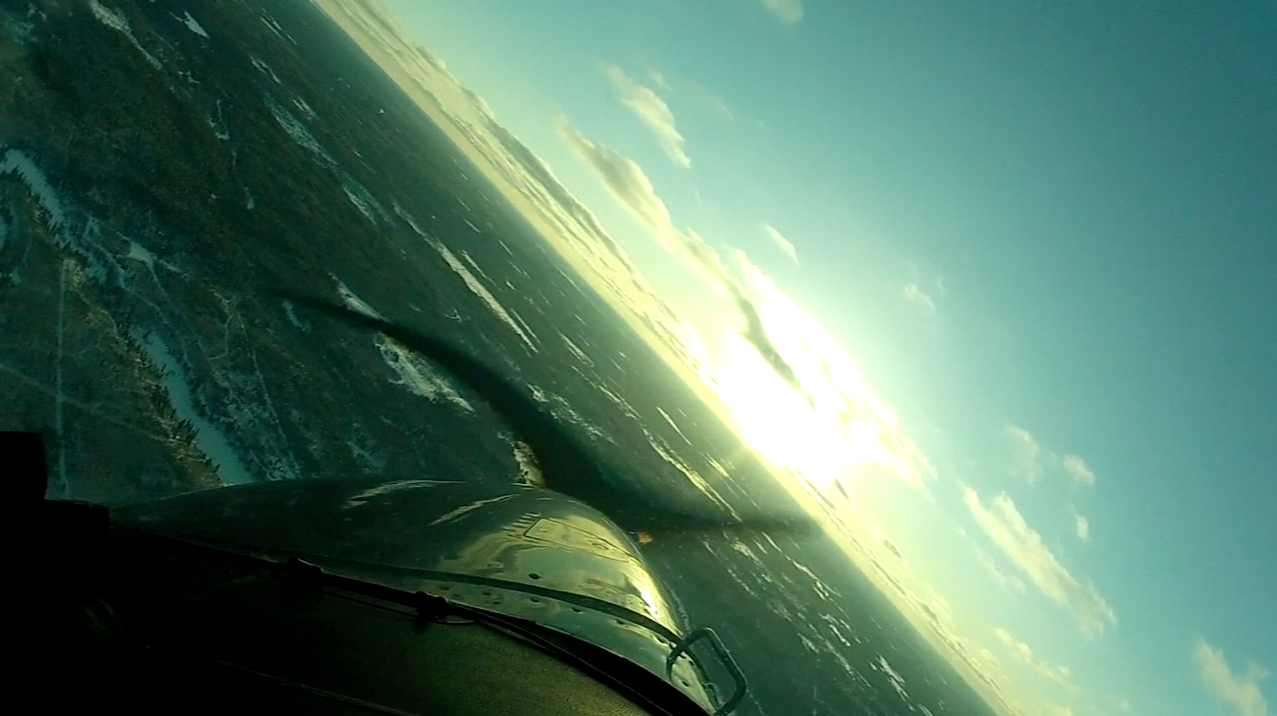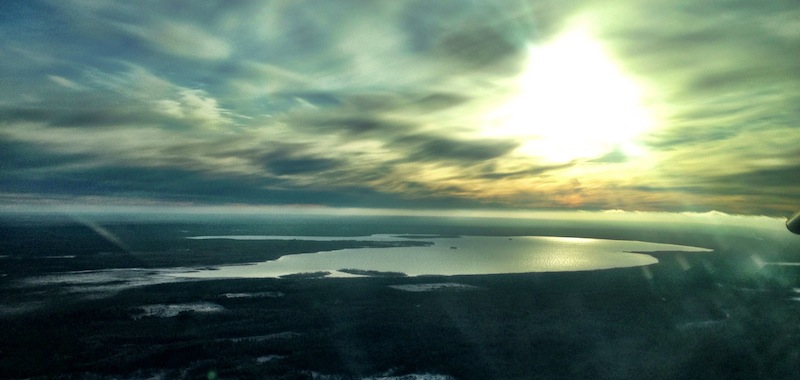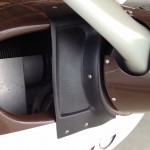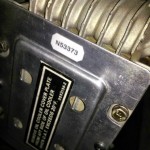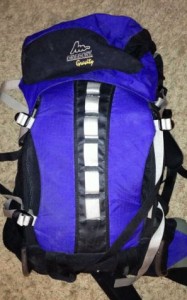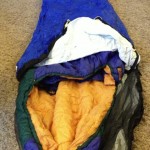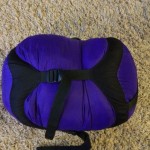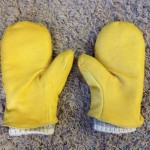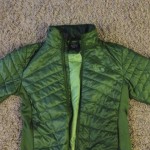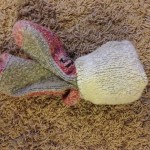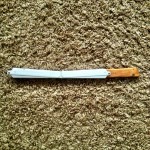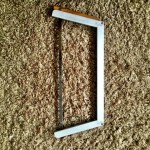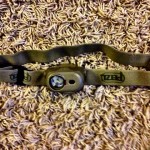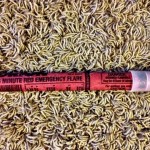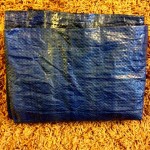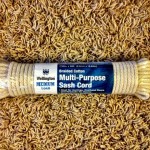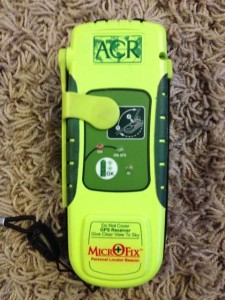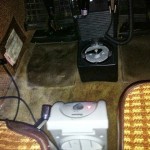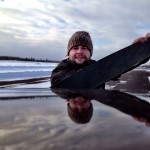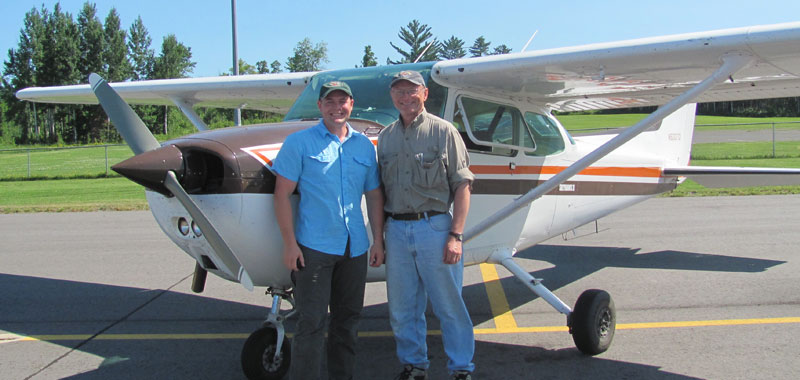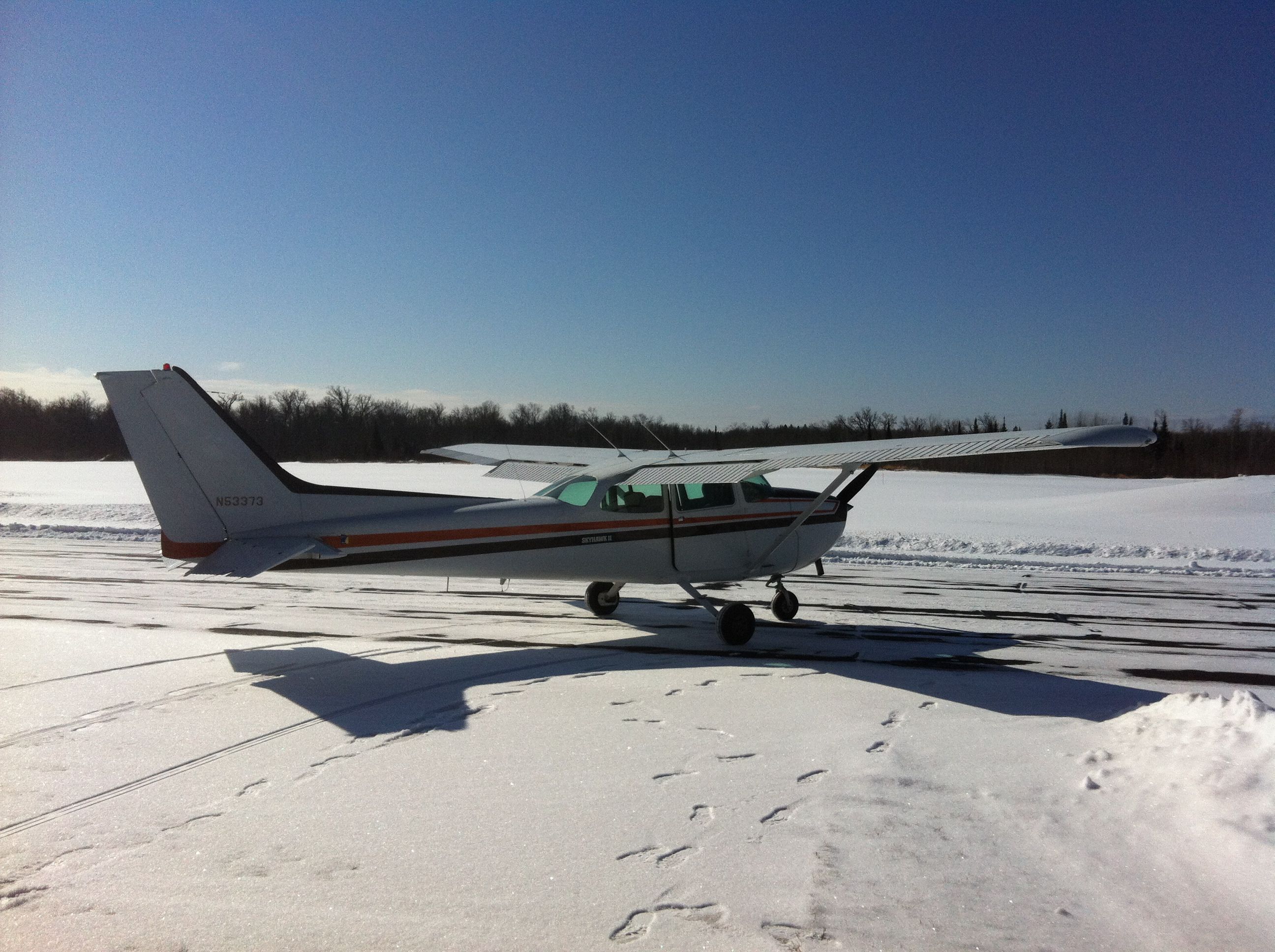Finally got some time to do a little editing. We took off from Valdez Alaska at 9:30 PM in early June. The next few videos I’ll be posting in the coming weeks are from this flight. We were up for an hour and a half and were in day conditions the entire flight. Got back down on the ground around 11:00 PM. Summer flying in Alaska has its advantages. 🙂
Tag Archives: flying
Flying the Mineral Creek Valley
Im really excited about the next few videos I’ll be sharing with you all. My family and I were able to go home to Valdez Alaska to visit the grandpa and grandma for a week. The weather was very cooperative and we were blessed with blue skies and snow capped mountains. I broke our first flight into three videos as I found it very difficult to cut any of it out during editing. The scenery is just stunning. Growing up here I never truly appreciated the backdrop that surrounds the town of Valdez. I hope you enjoy this first episode. We took off from Valdez Airport PAVD or VDZ and head up the first valley accessible from town. Mineral Creek has some active gold mines and is groomed all winter with some spectacular cross country skiing trails.
The Music in this show.
Intro:
Artist: Dan Tharp
Website: http://dantharpmusic.com
Song: “Kodi”
Show Music
Artist: Justin Gordon
Website: http://justingordon.weebly.com
Song: “Shack Song:
Artist: Dan Tharp
Website: http://dantharpmusic.com
Song: Almost
Little Flyers
Flying is quite the passion. It gives those lucky enough the opportunity to see sights few others experience. Im sure like most if not all of you I really enjoy taking people up flying. I really enjoy getting the opportunity to take people up for their first GA flight. I’ve had my ticket for a couple of years now and in that time I’ve taken 24 different passengers up for flights with a handful of them the flight being their first flight. Getting to share this with someone is a lot of fun.
My daughter has been up with me a few times. She will be turning two in April. She loves to fly. She will come up to me and say “Daddy plane, daddy plane”. I’ll ask her if she wants to go flying and she gets a big smile and nods yes. Here is one of her flights.
I’ve also had the opportunity to bring up both my niece and nephew for their first flights. Both were on frigid winter days so they were dressed for the occasion.
Getting Current
91 days. Thats how long it had been since my last flight. This winter has not provided me with the best flying weather one can imagine. With the polar vortex and just general IFR days you get with a change in seasons, I had watched the last three months slip by without a flight. I’m not saying that there weren’t any flyable days in those three months, but they were few and far between, and just never seemed to land on a day I could go.
It was time to get current. Watching the weather forecasts closely I finally saw an opening in the weather. The days had been cold. Really cold. With temps repeatedly reaching -25 to -45 F at night and with daytime highs rarely hitting zero it was nice to see an afternoon high of 4 F. I drove out to the airport Thursday evening and plugged in the plane with plans of monopolizing on the window of warmish air the next day. 20 hours later I leave work and head for the airport. The skies clear, next to no wind, and a balmy 6 degrees. I got to the plane and kept it plugged in as I did my preflight. Once that was complete I manually rotated the prop about 30 times in an attempt to circulate the oil inside the engine hoping to mix what was warmed by the block heater in with the rest. Then I pulled the plane over to the pumps and topped off the tanks. After a call to flight service for a weather briefing it was time to fire up the engines. The plane instantly roared to life and I made sure to keep the RPM’s below 1000 and stared down the oil pressure and temperature gauges. The needle on the oil pressure made its way up to just touching the green within a minute and I wasn’t getting any reading on the oil temp. I let the plane idle for about 10 minutes then did a little run up slowly applying power enough to see the oil pressure needle move up fully into the green. I then taxied down to the other end of the runway as it allowed the plane more time to warm up and was slightly favored in the wind department. I did my full run up and ran through the checklist. Then it was time to take off. I made a conscious effort to apply power very slowly during my takeoff and with the cold dense air was off the ground in no time. I did a couple of laps around the pattern with both my second landing so smooth I almost couldn’t tell when I touched down. Then I headed out for a quick little flight over the end of Lake Vermilion before the setting sun had me flying back to get my third landing in for the day.
It was a beautiful night with the sun setting on the horizon and very smooth dense air. As I drove home in the dusk I was thinking that on such a clear night and a near full moon, a night flight would be breathtaking with the ground covered in snow. Maybe another time.
Spring Training Flight
With the days getting longer and the daylight savings change there has been a nice bump in the number of hours available for flying after work. It is really nice to see the sun setting later and later each week.
With snow still covering the landscape I take off one evening for a sunset training flight. After a quick lap around the pattern I head up to 3000 ft and practice some steep turns, then go into slow flight and practice a stall. After dropping down to 2200 ft I maneuver some s-turns along highway 73 before flying back for three more laps around the pattern as the sun begins to disappear behind the horizon.
Winter Flying Preparation
Now that winter has officially arrived we have had a few snow storms, but some chilly sunny days as well. These days are amazing. Blue bird days with a white blanket of snow covering the ground. It makes for some beautiful views when you are soaring above the trees.
My last flight was a cross country from KCQM up to KINL which sits on the border between Minnesota and Canada. It is just over 50 nautical miles making it the perfect distance to build up your cross country time. The day I went the temps were right around 0º F or about -18º C. We have the winter kit installed on the plane which restricts the amount of air that gets into the engine and blocks air from flowing around the cooling fins on the oil cooling block. This is essential for helping reduce the possibility of the engine being shock cooled during flight.
So with the airplane wearing its winter protection it is also very important for the pilot and occupants to take the same precautions. My dad has always taught me to wear what you want to crash in. I grew up hearing this, but it really hit home when he was involved in a forced landing in Western Alaska. He has always taught me to to prepare for the unexpected. What do you want to have on you if you did happen to lose your engine in a remote area? What do you want to have in the plane? Need more incentive? Check out this recent AOPA story about a survival story after a forced landing.
Survival Gear
I have a backpack that I seatbelt into the back seat. This is so it will be within arms reach if I do find myself needing it. In this pack I have a number of things. I have a sleeping bag already inside a bivy sack stuffed in a compression stuff sack. If you are unfamiliar, a bivy is a one person four season shelter that is just big enough for you in your sleeping bag. This will allow me to quickly pull it out and just climb in. I’ll be in a perfect shelter to stay warm and dry in the frigid outdoors.
I also have a spare set of base layers both tops and bottoms and thick Smartwool socks. Along with that I have a spare hat, warm mittens, and a headlamp. To top off the base layers I have an extra jacket. It is hard to say what condition the clothes you are wearing will be in after a forced landing. To help keep me warm along with all that I have a bunch of heat packs that I will be able to activate and stick into my boots, into my mittens to help keep my extremities warm.
Aside from clothes, I have a knife, a road flare (for starting a fire to stay warm), a collapsable saw, a tarp, cord, and some basic fire starter material. These things can help me build a fire and possibly a quick shelter to help block the wind and cold.
On Me
While flying in the winter on my lower body I wear long underwear, wool socks, insulated carhartt pants, and mukluks. On my upper body I have on long underwear, an under armor shirt, a sweatshirt, a down vest, and a jacket. I typically unzip the jacket part way, and pop the top few buttons on the vest to help vent my core a little. I also manage the cabin heat so I’m not sweating. In my jacket pocket I have a knife, a hat, and a PLB (Personal Locator Beacon). Many people have one of these in their flight bag, or in their survival pack, but I want to make sure I have it on me so I dont’ have to go looking for it. Also if for some reason I can’t move it may give me options.
Preparation aside it is always important to file a flight plan before your flight and also let someone at home know what your plans are for your flight. These are simple things that you can do that will dramatically help people find you if you do have an emergency.
Prior to Flight
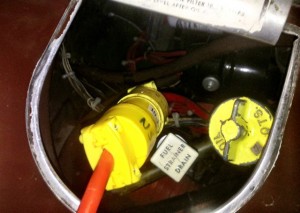
If I plan on flying in the near future and the forecast is calling for cold temperatures I always try to plug in the plane the night before. This gives the engine ample time to warm up the oil and other components. If I don’t get it plugged in the night before I make sure it is plugged in for a couple hours at a minimum before a flight. I am lucky that the plane I use is kept in a hangar. This drastically reduces the possibility of frost build up. If your plane is kept outside it might be a good idea to invest in some wing covers, and possibly some de-icing strategies.
When I get to the plane the day of the flight I place a small electric heater in the cabin of the plane. I start this as soon as I get to the plane. Then while I’m preflighting, checking weather, and filing my flight plan the panel is warming up which really helps cut down the wear and tear on the radios and gauges. The last thing I do right after unplugging the plane is I set the brakes, chock the wheels, make sure the key is on the dash, and cycle the propeller about 30 revolutions by hand. This helps move the warm oil around the inside of the engine and kind of pre lubricate everything before I attempt to start the engine.
Once I do start the plane I give it a lot of time to warm up. When I start to taxi I really don’t give the plane much power and let the propeller slowly pull me across the tarmac on my way over the the pumps or to the end of the runway.
The Fun
I know that was a lot of talk that makes you think about a forced landing, but that is a small price to pay for what winter flying has to offer. For starters the plane flies much more efficiently. The cold dense air helps the engine run better and the plane will get much better lift. I sure was amazed taking off from KCQM how quickly the plane lifted off the ground. Conversely on landing I found it difficult to get the plane out of the sky. It seemed like the plane didn’t want to come down. My flight instructor has warned me repeatedly about the dangers of shock cooling the engine. This can easily happen if you pull power on final. This drastically cuts down on the heat being generated since you are at much lower RPM’s, and since you are descending there is increased air being pushed into the engine which quickly cools things down. Because of this I was really trying to keep some power on final and the plane sure didn’t want to come down. I need to get back out and find the right distance to turn base so that I will be close enough to make the runway if I have engine problems, but far enough away to allow me time to come down and hit my spot.
On my cross country the frozen lakes and rivers below me made a patchwork of the landscape as I flew north. The sun was peaking through the clouds adding a nice light bouncing off the snow. Smoke slowly rising from wood stoves in peoples homes gave me a visual on the wind that confirmed what my airspeed and groundspeed were telling me. The video accompanying this post was just a practice flight to work on the PTS’s. I was out for over an hour doing steep turns, s-turns, turns around a point, stalls, and a few landings. I trimmed things down quite a bit. I hope you enjoy.
If you have any tips or tricks you use, or even more important if you notice something I’m doing%2
First Solo
Wow! Solo flight… We woke to a beautiful sunny calm morning at KCQM. We drove out to the hanger in the early morning light. The plane sat quietly on the smooth concrete floor of the hanger waiting for its next trip into the skies. After the hanger door was opened and the fresh air circulated the inside of the hanger I began my preflight. This routine task before every flight is one of safety, but I aslo enjoy it because it allows me to get my hands on the plane. It really is amazing how these things are put together and that all the science and engineering enables them not only to fly, but to do it so well. After my walk around was complete and I had ensured the fuel was clean, and that there was plenty of oil we pushed the plane out of the hanger. We had only flown a couple of hours the day before on a full tank of gas, and a dip check showed we had plenty of fuel for some pattern work so we skipped fueling up. We were planning on going for a cross country after doing some pattern work so we decided to wait to top off the plane until we had finished our local flying. So we hopped in the plane and I did my “Flow” which is a procedure that takes me through the pre start check list. By doing the same flow every time the goal is to get my muscle memory to take me through the steps helping me to not forget something on the list. After this was complete and a couple of shots of prime and a shout out the window to “clear prop” I fired the engine up. After an immediate check for oil pressure and a little time to warm up we slowly taxied out to the runway. What little wind there was that morning was favoring runway 31. So we took off and started our pattern work for the morning.
Everything went well. My climb outs were smooth, my turns were coordinated, and I was doing a nice job of hitting my designated airspeeds on decent. We did a couple of landings and practiced a go-around. As we were coming in to land on our final landing before heading back to the pumps to fill up for our cross country we were just touching down when a deer scampered out onto the runway. It was a tense moment where the decision to attempt a go-around or just stay off the power and try to miss the dear was quickly weighing itself out in my mind. My gut was to try the go-around, but my dad (CFI) quickly told me to stay off of the power. Since we had already touched down he wasn’t sure we would be able to clear the deer if we did try to fly over it. It turned out that the deer had plenty of time to get out of our way, and we were able to slow down and taxi back to the pumps.
I shut down the plane and was about ready to hop out and start going through the process of filling up the plane when my dad said “Do you want to take it around on your own?”. I replied “sure”. He asked for my medical and my log book to do the required paperwork for such an adventure, then got out the handheld radio from the plane and tuned it to a different radio frequency that we set on the other comm on the plane. This would allow me to hear him as well as other traffic incase he needed to give me some guidance. He pulled his headset out of the dash, and made sure it was stowed safely where it wouldn’t bounce around during the flight, told me to watch my airspeeds, keep my turns coordinated, and watch out for deer.
As you can imagine my heart was thumping a little louder than usual. My mind was racing trying to assess all of the things I would need to have actively processing in my brain over the next several minutes. He closed the door and stepped away from the plane and headed over to the side of the runway. This is where things really start to stand out. In a Cessna 172 there isn’t a ton of excess space. I immediately notice a void to my right where I always used to be able to feel if not sense my dad sitting there. For the first time I had to reach over and lock his door from the inside. Something I now needed to do as the sole person in the plane. Even though we had just been in the air, I went back through my flow. I reached down and touched the fire extinguisher, up to the trim tab checking that it was set for takeoff, on to the mixture pushing it all the way in. I went through the rest of the flow and it was time to start the plane and head out for my first solo flight.
The plane fired right up and after a check for oil pressure I slowly started to taxi from the pump. I did a radio call that I was to taxi via alpha to runway 31. On my way to the runway I passed my dad standing with his radio on the side of the field. I got to the edge of the runway and looked each direction as I did my radio call announcing that I was entering runway 31 preparing for takeoff. A few moments later with the throttle all the way into the firewall I was reaching 55 knots and just beginning to lift off the ground. WOW!!! The plane just seemed to rocket into the sky climbing out much quicker than it had ever before. It was a couple hundred pounds lighter without my dad in there and it was noticeable. It wasn’t long until I had reached 1800 feet and was starting my cross wind turn. As I was making my turn I kept an eye on my DG (Directional Gyro) to see when 31 was out the side of the airplane indicating I was perpendicular to the runway, at which point I lifted the wing and looked for traffic and to confirm my location in relation the runway. I then started my turn to down-wind still climbing out at 700 fpm. Once at 2300 ft I leveled off the plane and since I was half way down the field on my down-wind leg I pulled the carb heat in preparation for landing as part of my CGUMPS flow. When I was even with my touch down point I pulled the power back and kept the plane level which bled off some of my airspeed and I applied the first notch of flaps. I was maintaining my airspeed and watching for traffic while keeping an eye on the runway as I started my base turn and dropping another notch of flaps. Once again watching my DG in the turn to see when 31 would be out the side of the aircraft. I looked, and continued my turn to final as the runway was coming into view in the windshield. Coming in on final I was maintaining my airspeed with the stick and lining my self up to the runway with my feet and adjusting the power to ensure I’d make the runway. Once I knew I could clear the trees at the end of the runway the last bit of flaps were dropped. As I came into the runway I rounded out my decent, and flared the plane as it smoothly touched down with a squeak of the tires. My first solo landing. I survived, the plane survived, and not only that, the landing was great. I back taxied down the runway and did it all over again two more times. The next two landings were not as graceful as the first one, but the first one was really smooth and hard to beat.
After my three take offs and landings I taxied back to the pump where I met up with not only my dad, but Erin happened to stop by and was there to witness my first solo flight. It was a great feeling and look forward to continuing to learn to become a private pilot.
That evening a first solo tradition was acted out at home. In days long ago flight instructors were giving lessons in smaller airplanes that had only two seats, one in front of the other. It was typical for the student to sit in the front and the instructor to sit behind. In the days prior to aviation headsets the instructor would tug on the shirt tail of the student to get their attention during flight. Once the instructor felt the student was good enough to fly on their own they would cut off their shirt tail symbolizing the student didn’t need the instructors tugs any longer.
Music
Intro:
Dan Tharp
Website: http://www.dantharpmusic.com
Song: Kodi
Show:
Dan Tharp
Website: http://www.dantharpmusic.com
Song: Beth
More time in the left seat
My last flight in the left seat was on June 3rd. 19 days later waking up at 5:30 AM in search of calm skies my Dad (CFI) and I head out to the Cook airport (KCQM). This would be my fourth instruction flight. The sun was just making its way into view as I started my preflight inspection of the Cessna 172P. I feel like I’ve got the hang of the preflight. I check a quadrant of the plane, then refer to the checklist to ensure I’ve hit everything on the list. We typically don’t like to leave the plane in the hanger completely full of fuel so we usually fill it up before we go out flying and then put it away partially full. This prevents the expansion of fuel from leaking out onto the floor of the hanger. So the routine has been to open the hanger door, preflight the plane, then taxi over to the pumps to fill up before our flight.
Taxing is taking me a bit to get used to. Getting the fine control steering with my feet has been slow going for me. Also since the breaks are applied by tipping the pedals forward I feel like I need to have my heels off the floor so the balls of my feet are just below the top of the pedal which allows me to apply the breaks more easily. This however is a little uncomfortable as I’m having to hold my legs up there virtually unsupported. As soon as I take off though I drop my heels down on the floor so the balls of my feet are directly on the pedal and as breaking in the air is pointless. 🙂
We have been working on some short field and soft field takeoffs as well as normal takeoffs. These differ based on flap settings, angle of attack held while still on the ground, and how quickly you get the plane of the ground. Once in the air if on a soft field takeoff you keep the plane in ground effect until the plane has gained enough airspeed to safely ascend. For those of you who are unfamiliar with ground effect it is phenomenon where the airplane gets increased lift from a buffet of air being compressed between the earth and the ground. This will allow and airplane to fly with a lower airspeed than usually required by the aircraft. This effect can be experienced within the fist 20 feet of liftoff. So by using this to your advantage you can lift the plane off of the soft takeoff surface even before the plane really wants to fly. You can then hold the airplane in this buffeted area while the plane picks up speed. Once you’ve reached your normal liftoff speed you can then pull back on the stick and climb on out. With a short field take off you are theoretically trying to clear a 50 ft obstacle at the end of the runway like a stand of trees you may find in some back woods runway. With these takeoffs you use a speed recommended for your aircraft which produces the best altitude gain over distance traveled. Both of these types of takeoffs are preformed with one notch of flaps down.
Once we have arrived at our practice location we work on clearing turns, 30 and 45 degree bank turns, and slow flight. I’m still finding it a bit difficult to make those bank turns and maintain the same altitude throughout the turn. I am able to compensate during the turn to where I usually end up close to the same altitude when I get back to the starting point, but I am oscillating up and down throughout the turn. Part of it is the different back pressure needed between a turn to the left and a turn to the right. I just need to do more of them so I can get a muscle memory for what is required for each turn.
Now on to landings… Boy oh boy. With my first impression I want to compare this to riding a unicycle and juggling chainsaws. You have to actively use all of your limbs during this phase of flight. I know there is a sense I have’t tapped into yet that tells you when the plane is about to settle. I’m struggling with determining when to round out the descent and when to flare before landing. I do know the plane has an amazing ability to float down the runway. My dad somehow always seems to know right before the plane wants to settle and either begins the flare or has me apply a touch of power. I hope to find this sense sometime soon.
The flying has been fun. I love the opportunity to learn with my dad. He’s a great teacher, and very patient. I know he loves flying, and I hope he is enjoying the time we get together as much as I am.
Can’t wait for my next flight
Hook Point – Valdez, AK
On a beautiful sunny day we hop in the 172 and take off from the Valdez headed out to Hook Point. This is a beach landing on an amazing Alaskan rugged coastline. The shores are filled with tall pine trees and jagged rock formations. The beach at low tide has more than enough room for landing. A tidbit of information for those of you unaccustomed to beach landings. You want to put the plane down on the dark colored sand. This is the part of the beach that still is fairly damp which allows the sand to be very firm. If you land on the light colored dry sand you can easily flip your plane onto its nose. Just a disclaimer here.. Never attempt landings like this unless you receive some training first.
This beach happens to be give you acces to a cabin put up by the forest service for fly-in stays. Its a nice little A-Frame structure with a wood stove a little loft and a couple of bunks. A great little weekend getaway. Make sure you sign the guest book if you do end up visiting.
First time up in N53373
I woke up this morning to a snow globe outside. The flakes were falling pretty steady, but were light enough to float around through the trees. There had been some talk a week ago about going out for a flight with Bill Conger today. The forecast has a big snow storm rolling in around midnight tonight which is supposed to dump 5 -8 inches of snow on us through Monday morning. Based on this information and the current skies I saw out the window it didn’t look very promising.
I got a call from Bill asking if I wanted to just go and check out the plane even if we couldn’t fly. I was game and he said he’d swing by and pick me up in about an hour. During that time the skies parted and the sun took command of the skies. What was a snow globe turned into a bright blue skied day. We headed out to the hanger and after a preflight we were up in the air.
Our flight took us North toward Orr and then we looped back by Elbow Lake and then the length of Vermilion to Tower flying over Fortune Bay and then back to the Cook airport. Along the way we saw many snowmachiners out riding and quite a few people out ice fishing. It sure was a great day to be outside. I got a little big of flying in from the right seat. Bill was patient enough with my turns and difficulties keeping at a steady altitude. Sure was nice to be up in the air. I can’t wait until my flight instruction begins and I can start doing some of this from the left seat and start to work on my landings.

